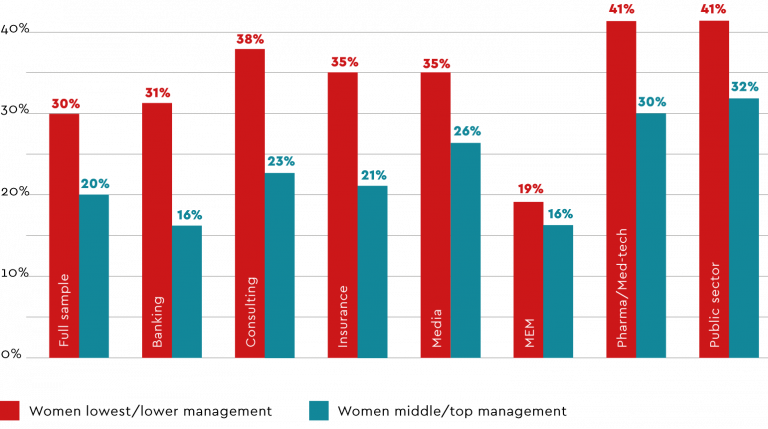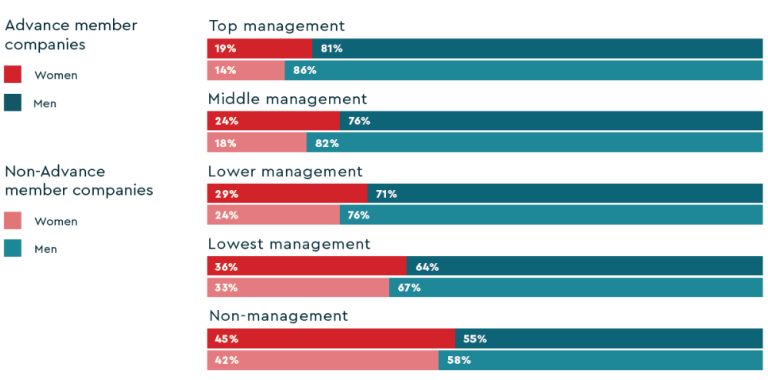
Not only do industries have different points of departure in terms of incoming female talents, but they also strongly differ in how well they are utilizing their female talent pipelines. For instance, the MEM1 and Banking industries have 16% women in middle and top management. Yet the MEM industry achieves this result based on a much thinner pipeline of only 19% women in lower and lowest management, compared to Banking with 31% in those lower management levels. This example shows that the MEM industry is leveraging its gender diversity potential well, whereas the female talent pipeline in Banking is decidedly underutilized.
1 MEM industry, as used here, includes machine, electrical, and mechanical engineering companies as well as other companies with similar structures and in related fields.

How is your industry doing when it comes to gender equality? Find out here.
There are considerable differences with regard to progress in increasing the percentage of women in management when looking at the various industries (even more so when analyzing individual companies). Progress in the overall sample is still slow at three percentage points (2020-2022) for management overall and for most management levels, too. To show progress over time and allow for accurate comparability, a sub-sample has been created of 235,000 employees’ HR data from companies that have participated year by year.
The “face” of leadership looks more gender diverse in Advance member companies compared to organizations that are not Advance members. The difference is most impressive in middle management (24% vs. 18%) and in top management (19% vs. 14%).

Why is progress so slow, and what explains the significant leaks between potential talent pipeline (women in non-management) and top management in some industries?
It is striking to observe that the most significant gaps in education as well as positions with influence and power appear in those industries where the hurdles for women to reach the top are the steepest: banking, consulting, and insurance. A likely explanation for the education and power gap in these industries could be a gender bias in hiring. This gender bias is to the effect that women are hired for positions that do not come with any substantial development perspectives, but are rather stuck in “nominal” management roles. Supporting this hypothesis: Considering the overall sample, women’s share of positions with personnel responsibility remains between 10% and 15% on the various management levels, whereas men’s share increases consistently with each higher level.
Data shows that the more Swiss an industry is, the less gender diverse it is or the thicker the glass ceiling. This lack of equity indicates that culturally Swiss organizations face difficulties accommodating women in thriving management careers.
As equality (or inequality) is a systemic challenge, it should be no surprise that the champions show the integration of inclusion and diversity in processes, structures, and culture.
Pharma/Med-tech is the industry with the least obstacles for women to reach lowest and lower as well as middle and top management. The industry champions inclusion in nearly every key performance indicator relevant for D&I performance:
For inspiration on what works, visit the rich selection of Best Practices!